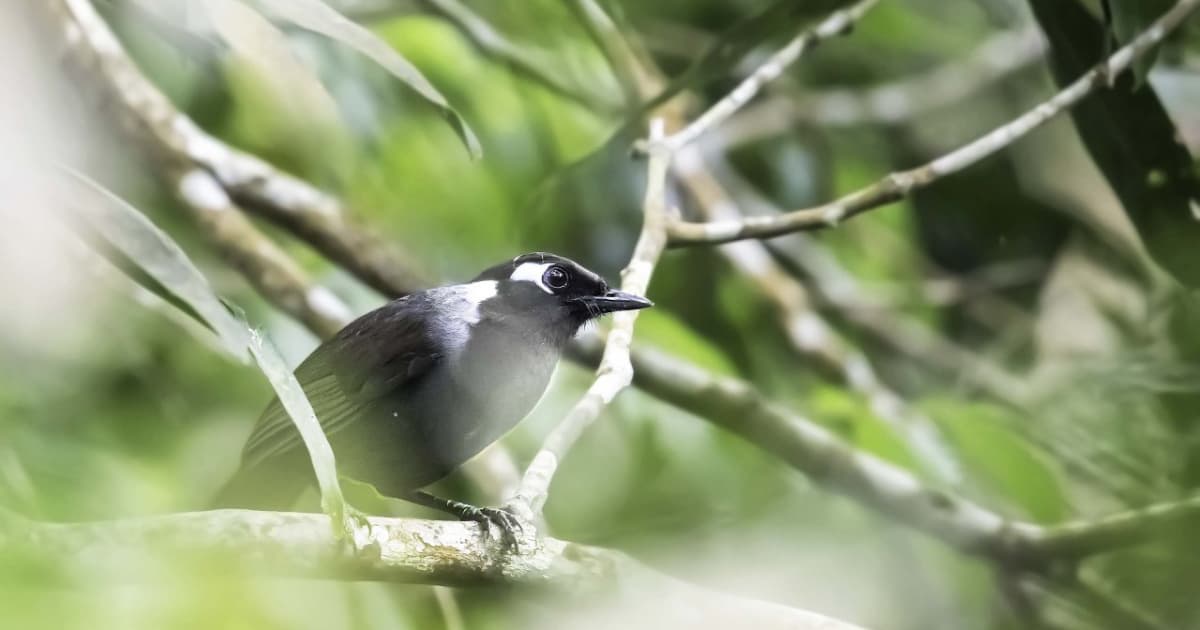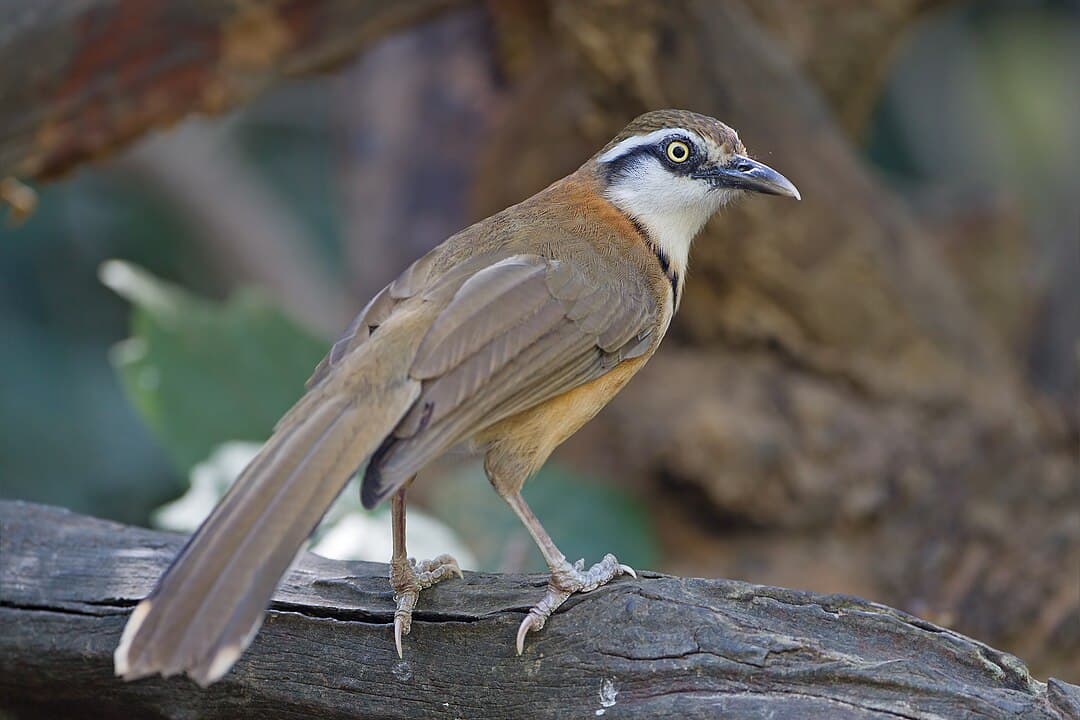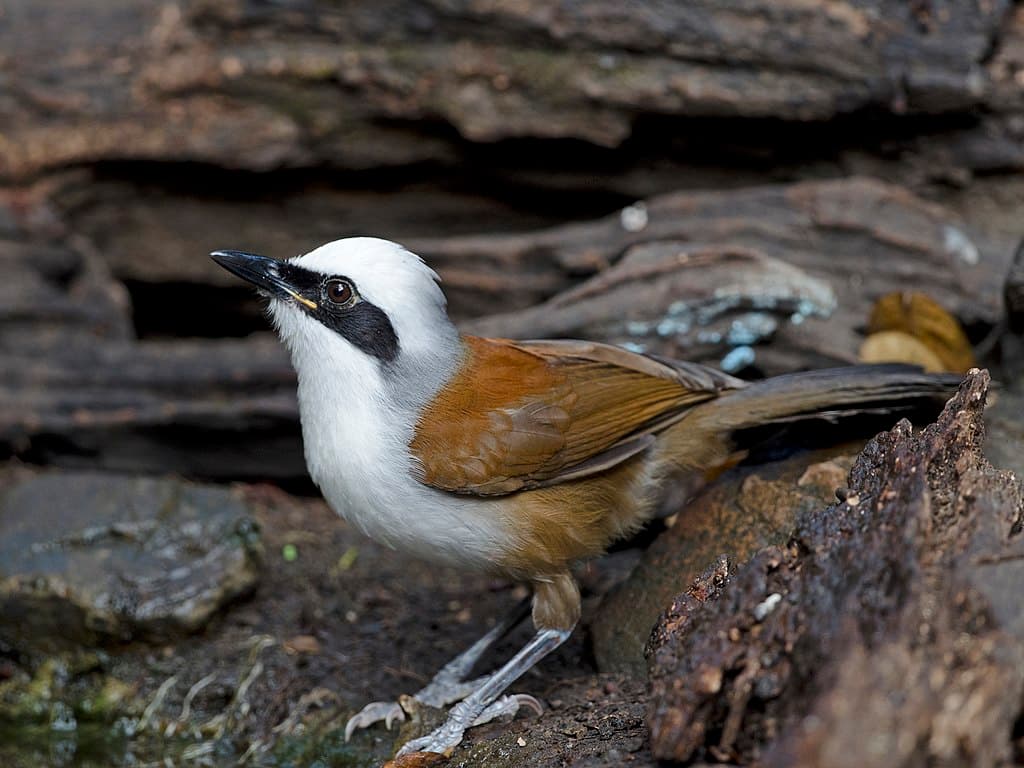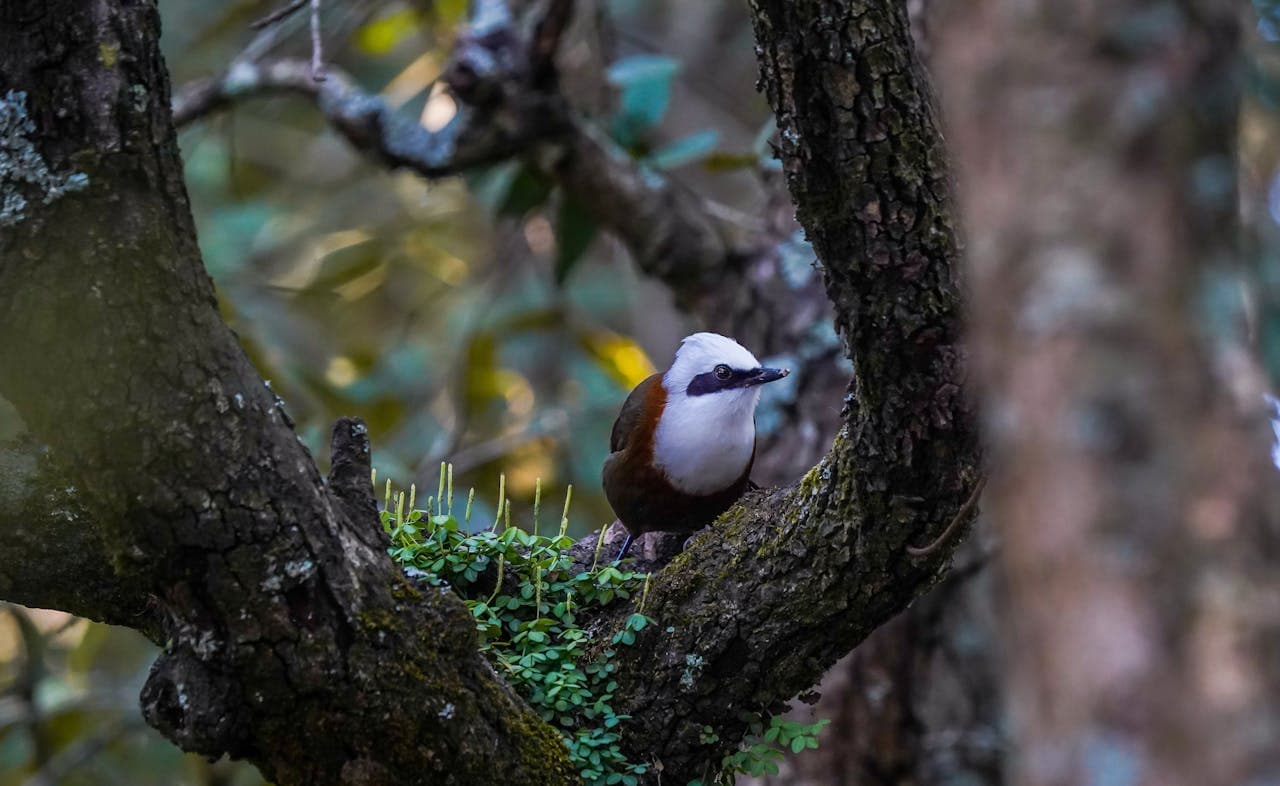Who knows that this adorable bird lives here? I don’t. In fact, there are 5 laughingthrush species in Cambodia, and I honestly hope I will come across one one day. Laughingthrushes are small fluffy-looking birds, and some species even have crests which make them look even more cute. I don’t know anything about them, and we are about to learn together below.
Black-Hooded Laughingthrush (ចកវ៉កមុខខ្មៅ)

The information about this laughingthrush species is very little, and this is how much we know about them. A black-hooded laughingthrush has an inky-black hood with a contrasting white collar and broad pale crescent behind its eye. Black-hooded laughingthrush is found in Cambodia, Laos, and Vietnam, living in various forest habitats on the hills and mountains. Some of their common homes are subtropical or tropical montane forests and subtropical or tropical moist lowland forests. They are sociable birds that hang out in loud flocks and give cackling calls as they move through the forest. The small range is threatening their population as they are facing habitat loss from year to year.
Black-Throated Laughingthrush (ចកវ៉កកខ្មៅ)

One of the special features of the black-throated laughingthrush is the white cheek patch that stands out on its face. The bird has a black face and throat while the fluffy and soft plumage is blue-gray in color. It has brown overtones on the wings and tail while its strong and stout legs and feet are pale red. As highly social birds, they stay in small flocks while foraging for food using noisy calls to communicate with each other. When alarmed, their calls will alert other birds to fly away.
This bird has a wide distribution across Southeast Asian countries including Cambodia, Laos, Myanmar, Thailand, and Vietnam as well as China. They are fond of subtropical or tropical montane forests and subtropical or tropical moist lowland forests. However, they also forage on the ground of bamboo woods, brushy forest edges, bushes, and dense primary forests as well. They feed on crustaceans, insects, and a variety of seeds and vegetation that they can find in their habitats. Habitat fragmentation and habitat loss are the main threats to their survival, and people also catch them to use as songbirds.
Cambodian Laughingthrush (ចកវ៉កភ្នំក្រវ៉ាញ)

By the name, you can already tell this is a laughingthrush species that is native to Cambodia. The bird is found in the southwestern part of the country, living in the evergreen forests on and near Aural mountain. It grows to around 28 centimeters to 31.5 centimeters, and it has a dark plumage and dull chocolate-brown crown. The face and breast of the Cambodian laughingthrush are glossy black, and it has a white patch behind its ear coverts. Due to the small range, the information on this laughingthrush is also quite limited. They might feed on large invertebrates, and there is no data on their population and habits.
Lesser Necklaced Laughingthrush (ចកវ៉កវ័ណ្ឌទ្រូងខ្មៅ)

Growing up to 31.5 centimeters, a lesser necklaced laughingthrush is a large laughingthrush species with some interesting features. It has a mid-brown crown and upperparts along with white underparts with rufous breast and flanks. The most distinctive part is the narrow blackish necklace from its ear coverts across its breast. Lesser necklaced laughingthrush live in Bangladesh, Bhutan, Cambodia, China, India, Laos, Myanmar, Nepal, Thailand, and Vietnam. These birds live in broadleaf evergreen and deciduous forests, hedgerows in open areas, and secondary forests. Across their range, the lesser necklaced laughingthrush feeds on insects and their larvae such as ants, millers, and snails. They also take on lizards as well as berries, green vegetable matter, seeds, and small fruits.
White-Crested Laughingthrush (ចកវ៉កកំប៉ោយស)

This laughingthrush species is small yet stocky, and it grows to around 13 to 15 centimeters. It has rufous brown plumage with a white face and raised crest that looks absolutely stunning. There is a broad and elongated black eye mask on the bird’s face that add more contrast to the bird. White-crested laughingthrush is both noisy and shy, feeding and moving in a big flock with other species but avoiding people.
White-crested laughingthrush has a range from the Himalayan foothills to Southeast Asia, living in forests and scrubs across their range. They inhabit dense, moist and shady thickets and shrubs, and the edge and understory of broadleaf areas in secondary forests. This bird feeds on the ground, and their common meals are beetles, caterpillars, flies, leeches, mealworms, and snails. At the same time, they also consume fruits, nectar, seeds, and small amphibians and reptiles as well. Despite the small size, they can take on small frogs, lizards, and snakes as long as the opportunities allow.
Related Post: Starling Species In Cambodia
